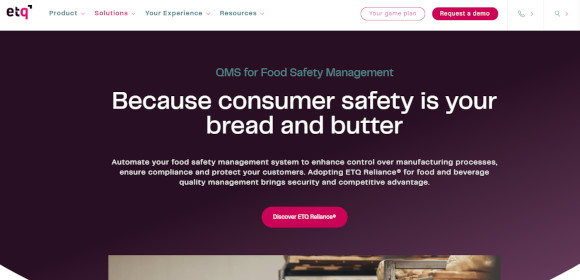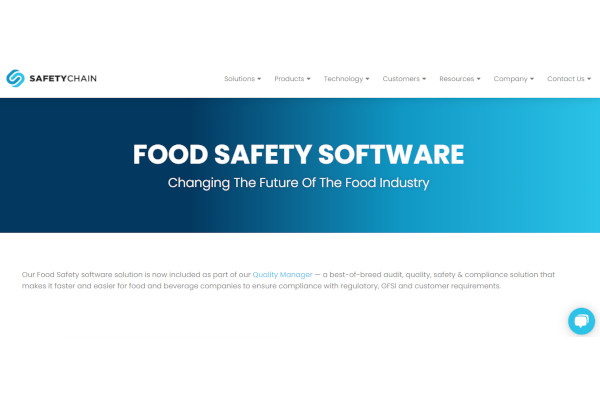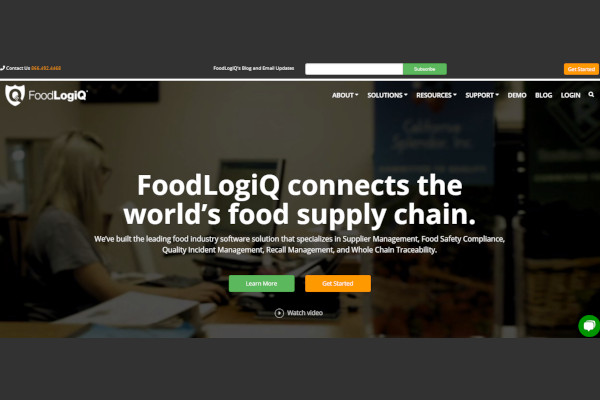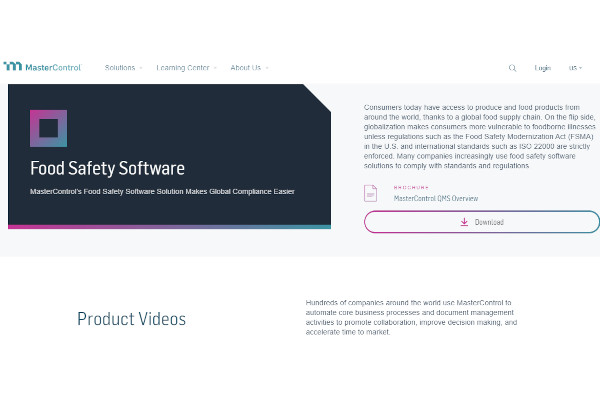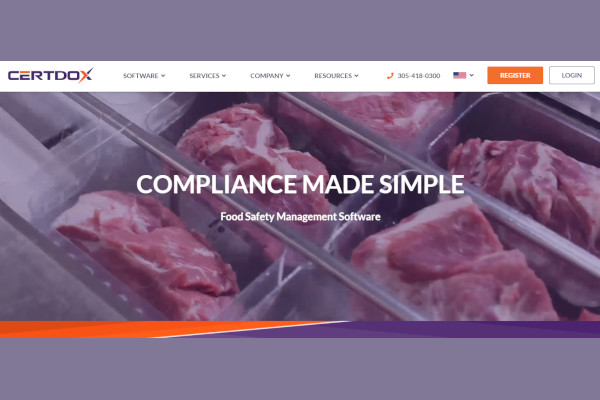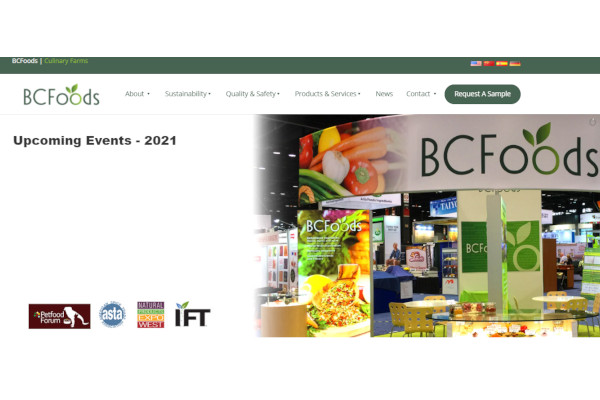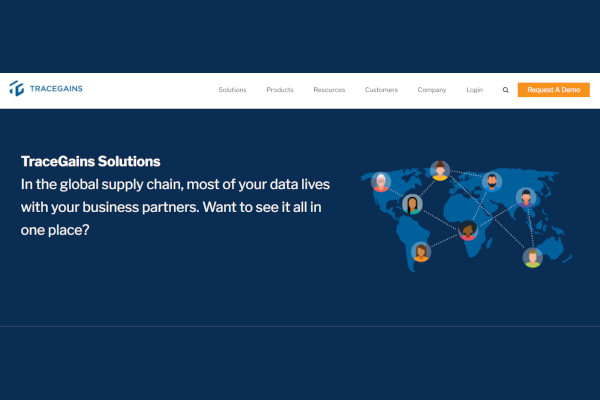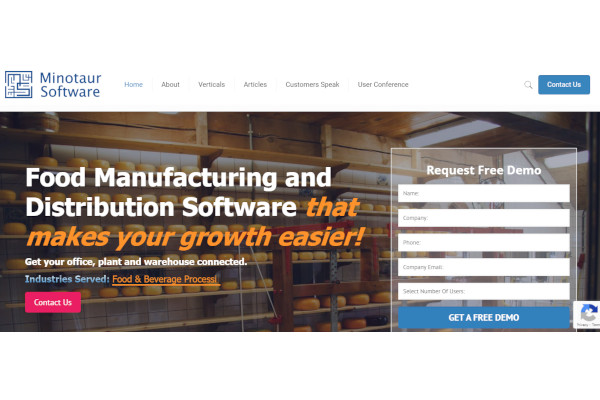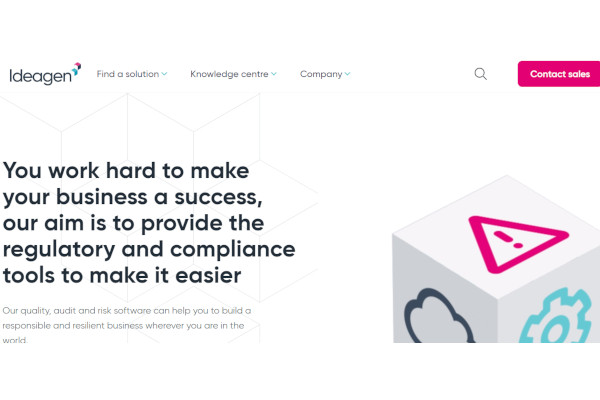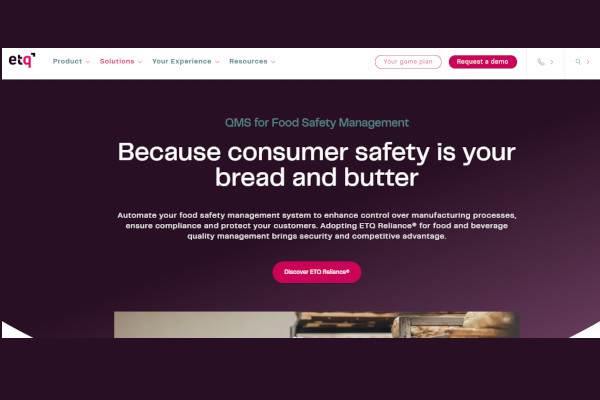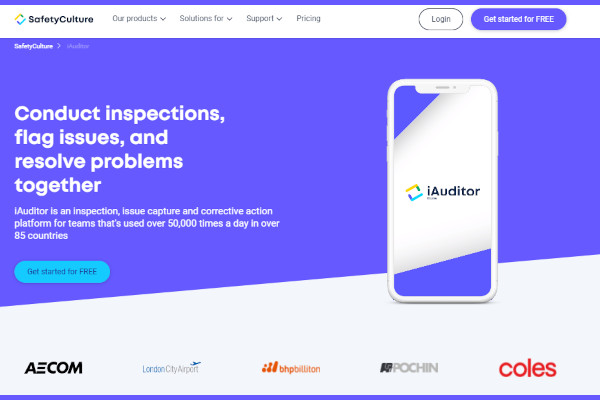Optimizing food safety does not only benefit your clients and your business’s reputation, it also helps you ensure compliance with food safety regulations and standards and streamline key business processes. Managing processes and documentation on food and beverages can be downright complicated. Not to mention, the food and beverages supply chain faces various risks, from spoilage and contamination to errors in packaging. This is when a robust food safety software tool comes into play to offer a compliance framework and tools for managing risks in every step of the food and beverages inventory management.
11+ Food Safety Software
1. SafetyChain
2. Safefood 360
3. FoodLogiQ
4. MasterControl
5. Certdox
6. BC Food
7. JustFood
8. TraceGains
9. Minotaur Software
10. Ideagen
11. ETQ
12. iAuditor
What Is Food Safety Software
Food safety software is specifically designed to manage food safety, facility safety, and sustainability program in accordance with the regulations and standards to ensure compliance. With that said, a food safety management software solution should incorporate with Hazard Analysis and Critical Control Point (HACCP), SQF, and FSMA, among other similar regulations. The reason for implementing this food safety management system is to streamline key business processes, manage suppliers, and guarantee high-quality products for customers and reduce risks to maintain safety and ensure environmental responsibility.
Benefits
Establishing a food safety management system for the first time, or just improving an existing manual process? Whichever the case may be, using a food management software solution can give these fundamental benefits:
– increased efficiency in the overall workflow
– optimized compliance by addressing specific regulatory requirements
– reduced compliance costs due to an automated system that helps you mitigate risks
– increased inspection preparedness by ensuring processes and essential documents will be visible to auditors and authorized users alike
Features
Food safety management software provides integrated and automated features to maintain food safety. With this software, you can sync all temperature analyses in real-time across all devices. Wherever you are, you can check for food temperatures by simply viewing the app. You can also check reports, maintain logs, and take mitigating actions on issues before they get worse.
Top 10 Food Safety Software
1. SafetyChain Compliance Manager
SafetyChain Compliance Manager is a plant management platform designed to improve yield, maximize productivity, and ensure compliance. SafetyChain has 116 employees and makes $7M in revenue.
2. Safefood 360
Safefood 360 is a software designed to cover all aspects encompassing food safety and compliance management. Safefood has a company size of 26 employees and makes $4M in revenue.
3. FoodLogiQ
FoodLogiQ allows traceability, ensures food safety compliance, and supply chain transparency. The software integrates with your existing systems through API.
FoodLogiQ has 76 employees and makes $3M in revenue.
4. MasterControl Qx
MasterControl offers a software platform that boosts quality management processes through employee training management, document and change control, risk assessment, audits, and prevention action, among others. MasterControl has 600 employees and makes $125M in revenue.
5. TrackWise
Sparta Systems’s TrackWise software optimizes quality, ensures compliance, reduces risks, and lowers costs for global clients across multiple industries. Sparta Systems has a company size of 226 employees and makes $120M in revenue.
6. bcFood
bcFood — a fully integrated enterprise application built entirely on MS technologies and MS dynamics. bcFood is the world’s largest installed small-to-midrange ERP application.
bcFood has a company size of 31 employees and makes $6M in revenue.
7. JustFood ERP
JustFood’s enterprise resource planning (ERP) solution focuses on the needs of the food processors and distributors. Plus, its software can be scaled as the business grows.
JustFood has 87 employees and makes $16M in revenue.
8. Food Connex
Food Connex provides a customized solution from integrated systems and software designed to meet the specialized needs of the food industry.
Food Connex has a company size of 13 employees and makes $2M in revenue.
9. ComplianceMate
ComplianceMate is an HACCP compliance and temperature monitoring software tailored to assist in restaurant management and food service operations.
ComplianceMate has 48 employees and makes $9M in revenue.
10. Fishbowl Inventory
Fishbowl Inventory consolidates material expiration tracking, batch processes, and a fully customizable bill of materials, all with the functionality to help businesses stay in touch with their unique FDA requirements. Fishbowl Inventory has a company size of 180 employees and makes $37M in revenue.
FAQs
What Are the Types of Food Hazards?
There is one primary type of food hazard: contamination. All food is at risk of different types of contamination, namely, chemical, microbial, physical, and allergenic.
What Is Considered to Be the Temperature Danger Zone for Food?
According to the Food Safety and Inspection Service from the U.S. Department of Agriculture, the temperature danger zone for food would be between 40 °F and 140 °F.
What Are the Challenges in Food Safety Management?
Among the common factors contributing to potential food hazards are improper agricultural practices, like poor hygiene at all stages of the food chain, lack of preventive controls, misuse of chemicals, contaminated raw materials, and improper storage.
Avoid costly penalties and fines, prevent errors, and reinforce best practices in food safety management. Take advantage of food safety software to get real-time information to help you boost performance and decision-making. And, of course, keep in touch with the food and beverages regulatory standards.
Related Posts
10+ Best Chemical Software for Windows, Mac, Android 2022
12+ Best Vulnerability Scanner Software for Windows, Mac, Android 2022
4+ Best Bundled Pay Management Software for Windows, Mac, Android 2022
10+ Best Trust Accounting Software for Windows, Mac, Android 2022
10+ Best Patient Portal Software for Windows, Mac, Android 2022
13+ Best Virtual Reality (VR) Software for Windows, Mac, Android 2022
12+ Best Bed and Breakfast Software for Windows, Mac, Android 2022
15+ Best Resort Management Software for Windows, Mac, Android 2022
14+ Best Hotel Channel Management Software for Windows, Mac, Android 2022
12+ Best Social Media Monitoring Software for Windows, Mac, Android 2022
10+ Best Transport Management Software for Windows, Mac, Android 2022
10+ Best Other Marketing Software for Windows, Mac, Android 2022
10+ Best Top Sales Enablement Software for Windows, Mac, Android 2022
8+ Best Industry Business Intelligence Software for Windows, Mac, Android 2022
10+ Best Insurance Agency Software for Windows, Mac, Android 2022
